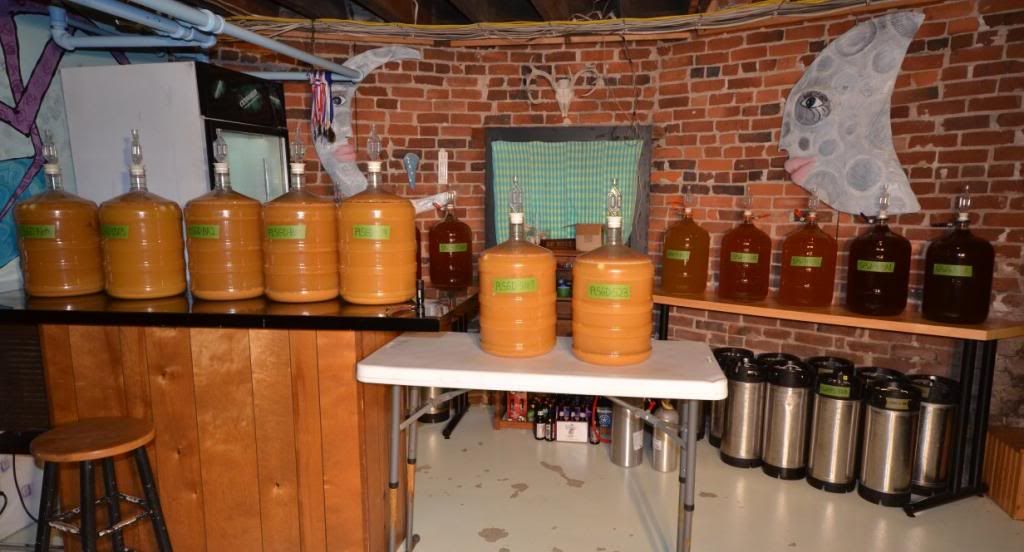Kevin...did I buy a few kegs off you through C-list like 2 years ago, at a gas station in C-ville? I had driven down from Baltimore for meetings...the guy said he made hard cider for a living...
No, that sounds like either Tim or Dan from Potter's Craft Cider. When they moved their operation to Cville, they had hundreds of corny kegs, but have been switching to Sankes, which are a lot more expensive but easier for bars and restaurants to handle. The switch was a real boon to local brewers, as they sold their surplus kegs at very reasonable prices. Nice guys, great cider.
Would you suggest those amounts/types of sugar
Sounds about right. I usually shoot for a starting gravity of about 1.065. To my taste a mix of 2/3 turbinado and 1/3 corn sugar tastes more like the natural apple sugar when it ferments out, but it depends what you are going for. The brown sugar will give you a more caramel taste.
Would you suggest a lower ferm temp around 65? And this is to slow fermentation, right?
I've found that 60 to 65 works best for me. Partly this is for convenience. You can ferment at higher temps and it will taste OK but you will have a much smaller time window from when it goes from too sweet to too dry.
In your experience, to get a nice not too dry taste what do i want my FG to get down to and how long would it take?
The target final gravity depends a lot on the juice you are starting with and personal taste. I usually shoot for about 1.010 for myself, 1.020 for SWMBO. That would take about 2-3 weeks at 65F. I'd check it at about 10 days
my plan is to cold crash/rack/cold crash/keg. Do you agree?
That would probably work - I usually do rack/cold crash/rack to 5 gal/let clear and make sure ferment doesnt restart/keg
let's say I carbed this up and decided to bottle some later. Could this stuff get warm and not dry out?
That depends on how successful you were on the crash. Its definitely possible - I've got bottles of semi-sweet carbed cider that have been stored at room temp for several years with no problems. However most people on this site havent had as much success. I suspect that using low nutrient juice - ie low or no fertilizer on the trees - helps a lot. I also keep an eye on my carboys after the crash for at least a month to make sure that they dont start back up. For example, in the above pic, I've got 9 carboys clearing on the back shelves that I crashed about a month ago. 8 are still dead still, but one has a few tiny bubbles coming up now and then. Its barely enough to move the airlock so I'm not worried about it drying out before I keg it, but I'll definitely cold crash that one again before kegging, so it doesnt become a problem in the future. If you keep the keg cold and drink off the tap, then you dont have to worry about whether you really got every last bit of yeast.




